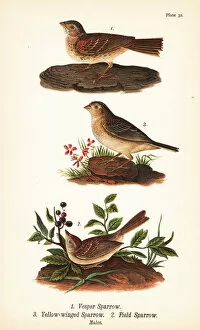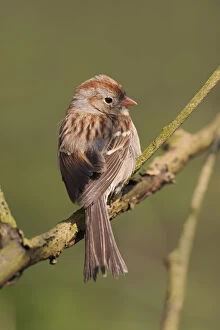Field Sparrow Collection
The field sparrow, scientifically known as Spizella pusilla, is a charming little bird that can be found in the grasslands and open fields of North America
All Professionally Made to Order for Quick Shipping
The field sparrow, scientifically known as Spizella pusilla, is a charming little bird that can be found in the grasslands and open fields of North America. With its subtle beauty and melodic song, it captivates both birdwatchers and nature enthusiasts alike. Often mistaken for other sparrows such as the Vesper sparrow (Pooecetes gramineus) or the grasshopper sparrow (Ammodramus savannarum), the field sparrow has its own unique characteristics that set it apart. Its plumage is adorned with warm hues of brown and gray, blending perfectly with its natural surroundings. This delicate creature measures around 5 to 6 inches in length, making it one of the smaller members of the sparrow family. Despite its size, it possesses a powerful voice that resonates through meadows during breeding season. Its sweet trill fills the air with joyous melodies, creating a symphony amidst tall grasses. The field sparrow's habitat preference reflects its name; it thrives in open fields where tall grasses provide ample cover for nesting and foraging. It feeds primarily on seeds but also indulges in insects when available. This adaptable diet allows them to survive throughout different seasons. Observing these birds can be quite rewarding as they display fascinating behaviors like hopping along low branches or perching atop shrubs while singing their hearts out. Their presence brings life to vast landscapes often overlooked by human eyes. Robert Havell's artwork from 1832 beautifully captures this species' essence - an intricate lithograph showcasing every detail meticulously drawn by hand. These historical depictions serve as reminders of our connection to nature throughout time. As we appreciate these stunning illustrations or modern photographs capturing their gracefulness today (Picture No. 11807411 & Picture No. 11807410), let us remember how important it is to preserve habitats where these magnificent creatures thrive.









